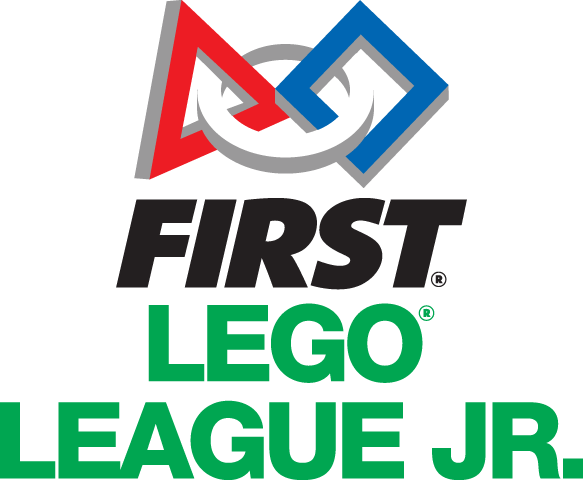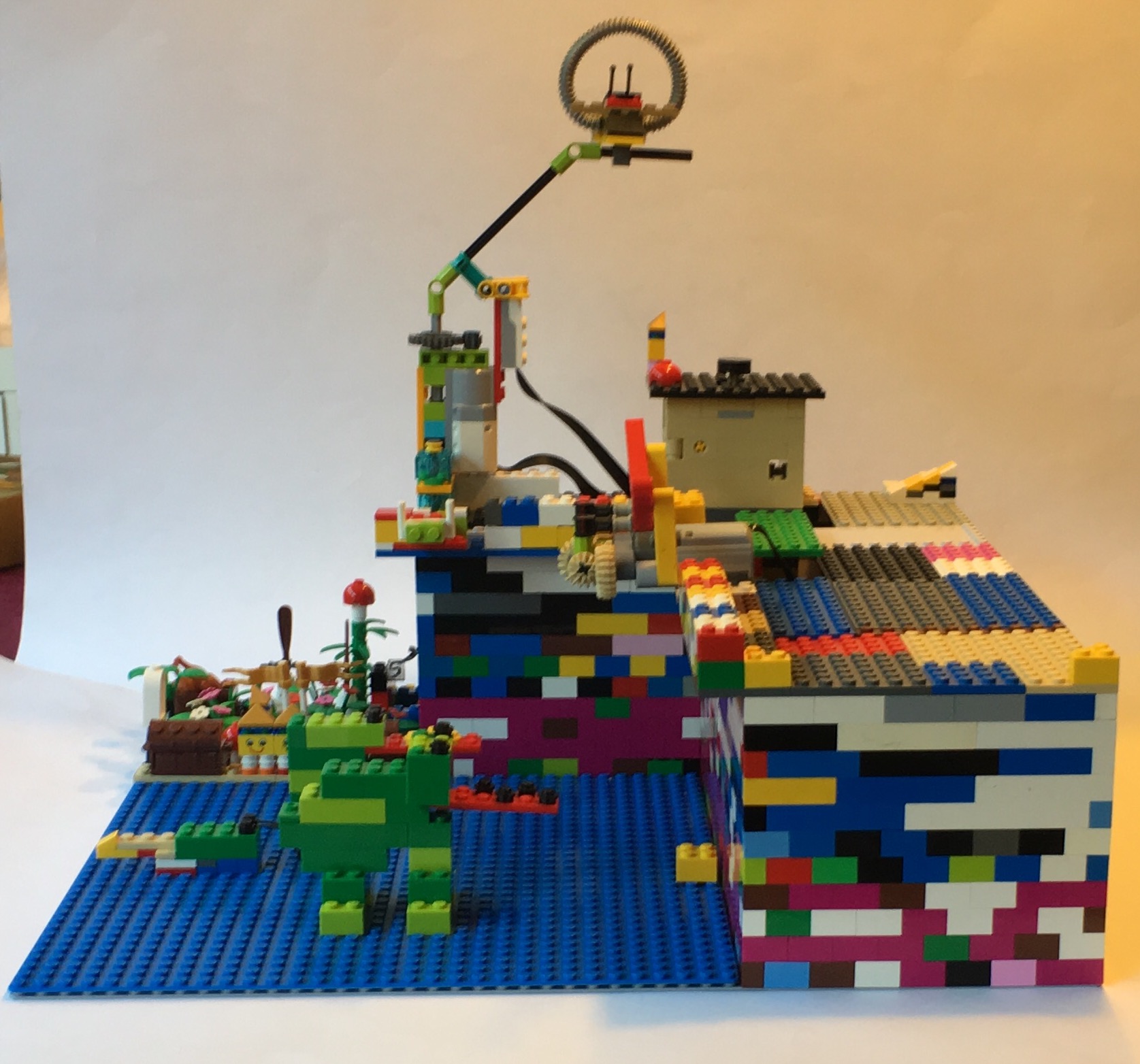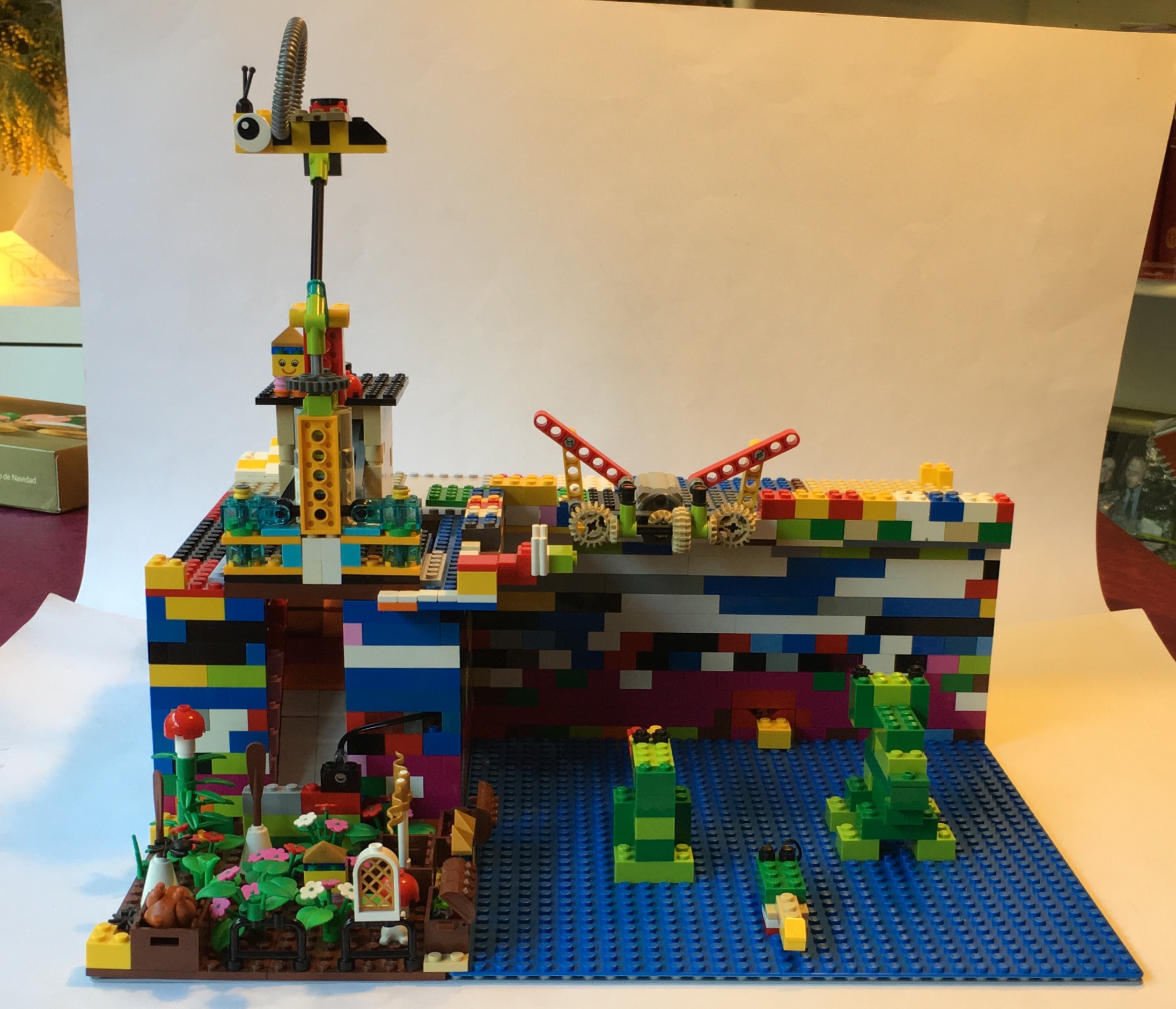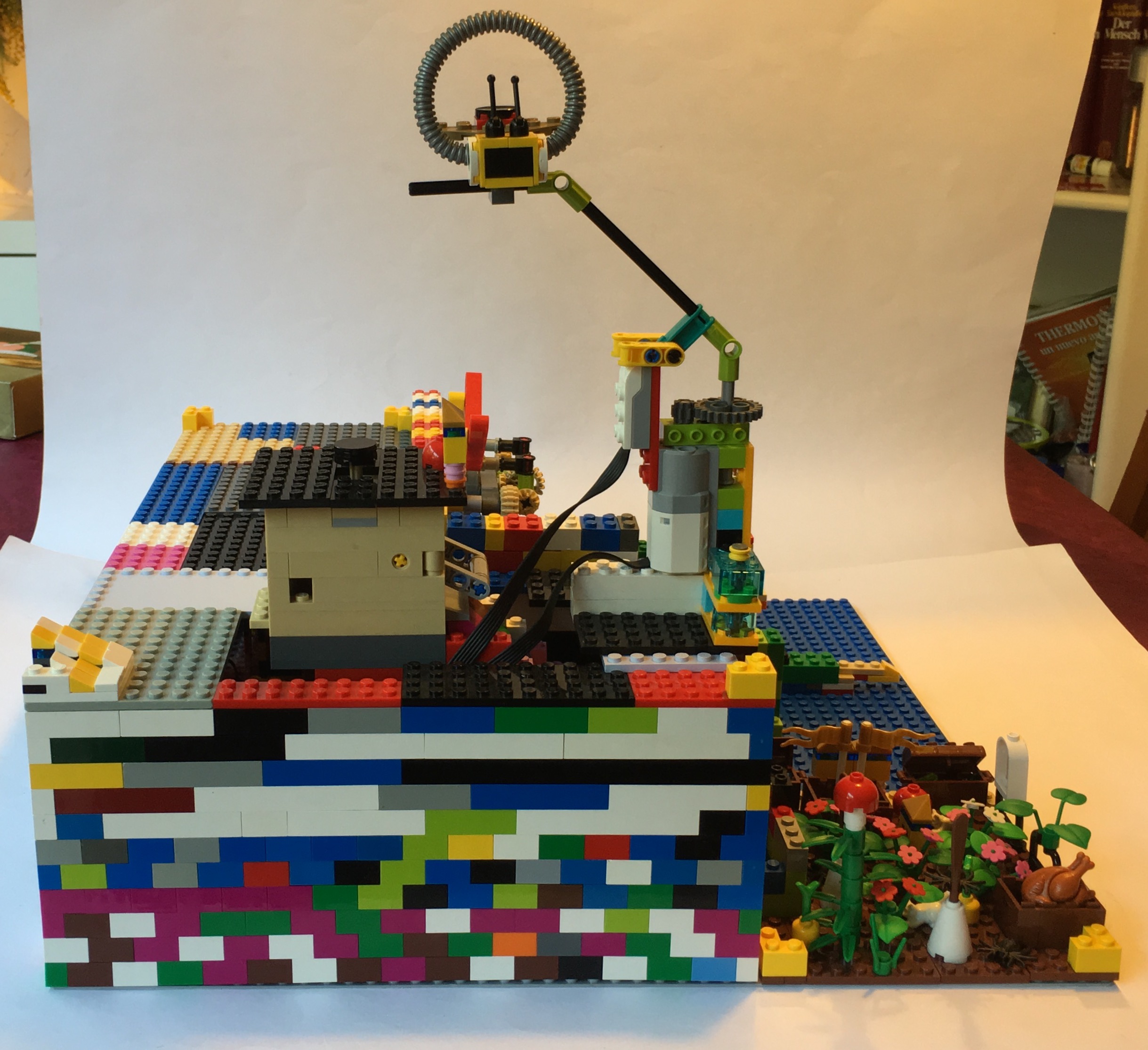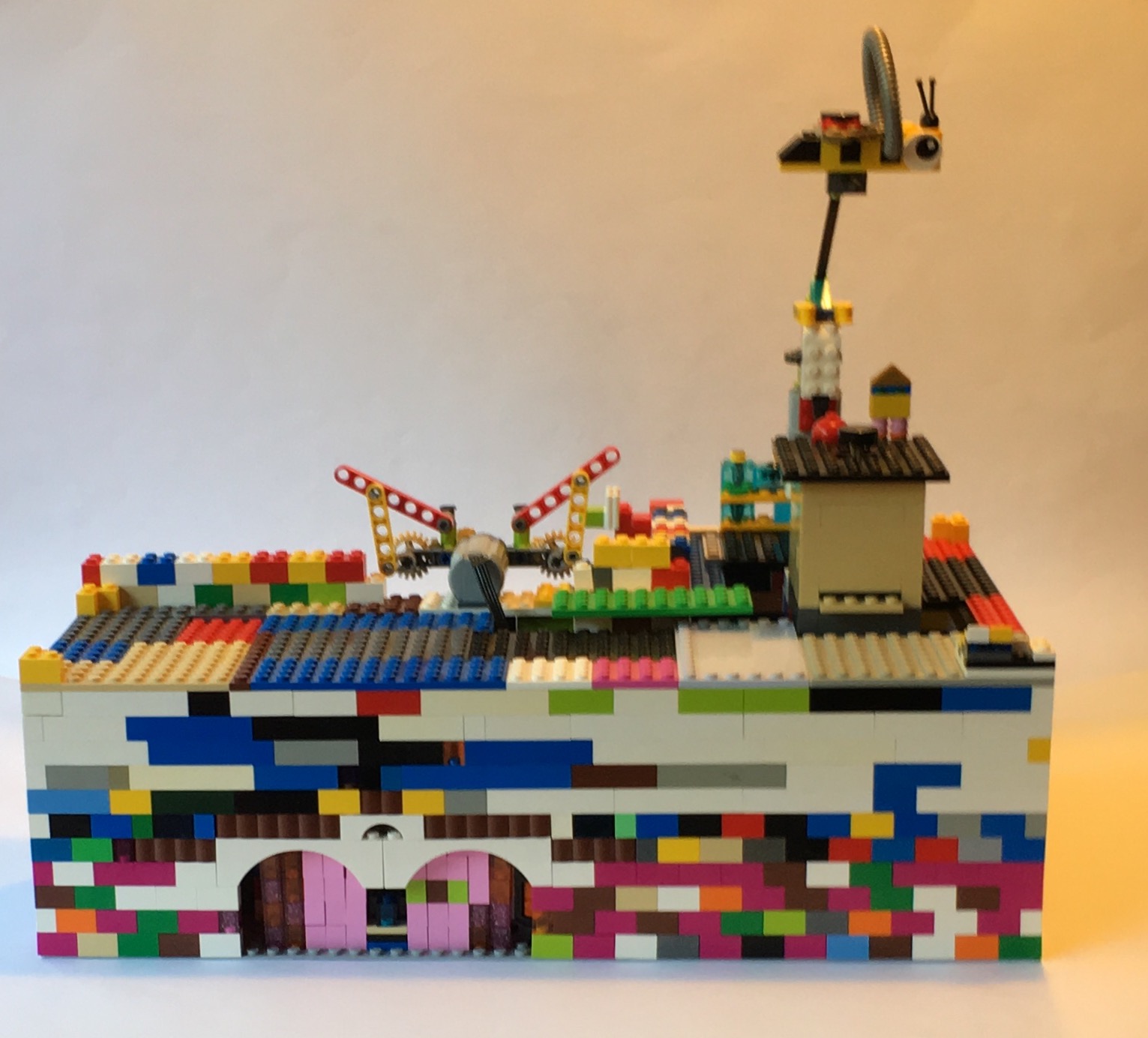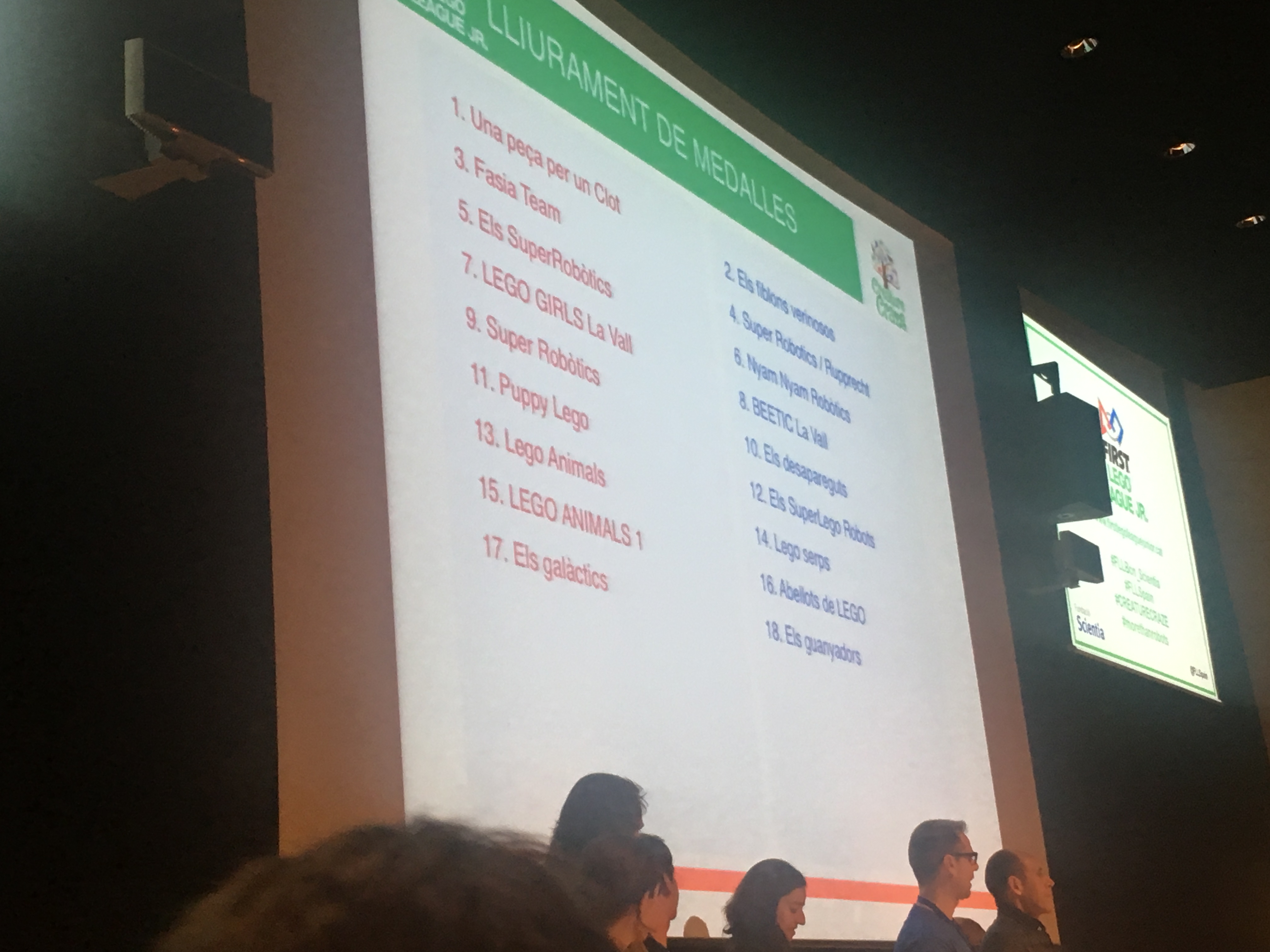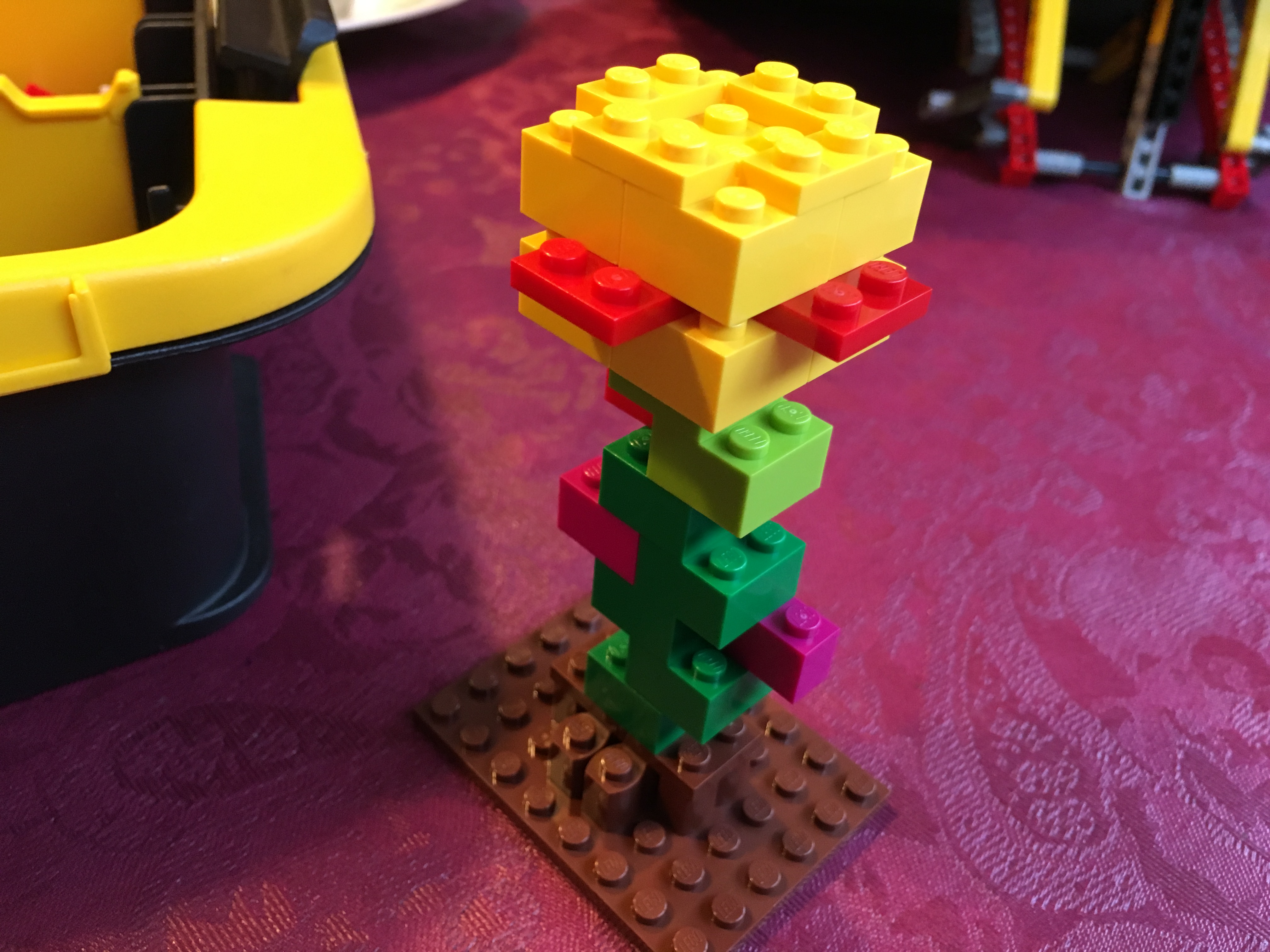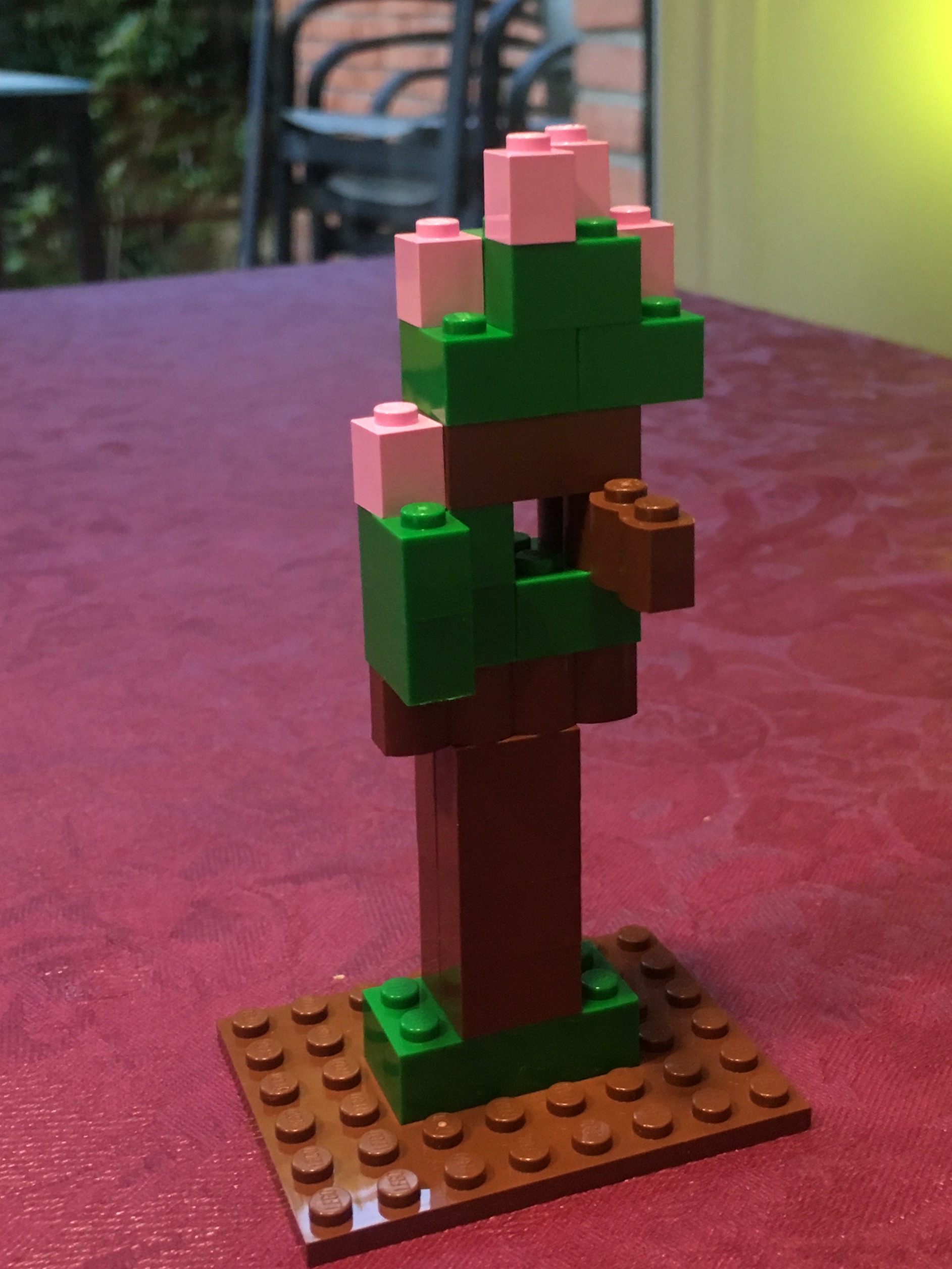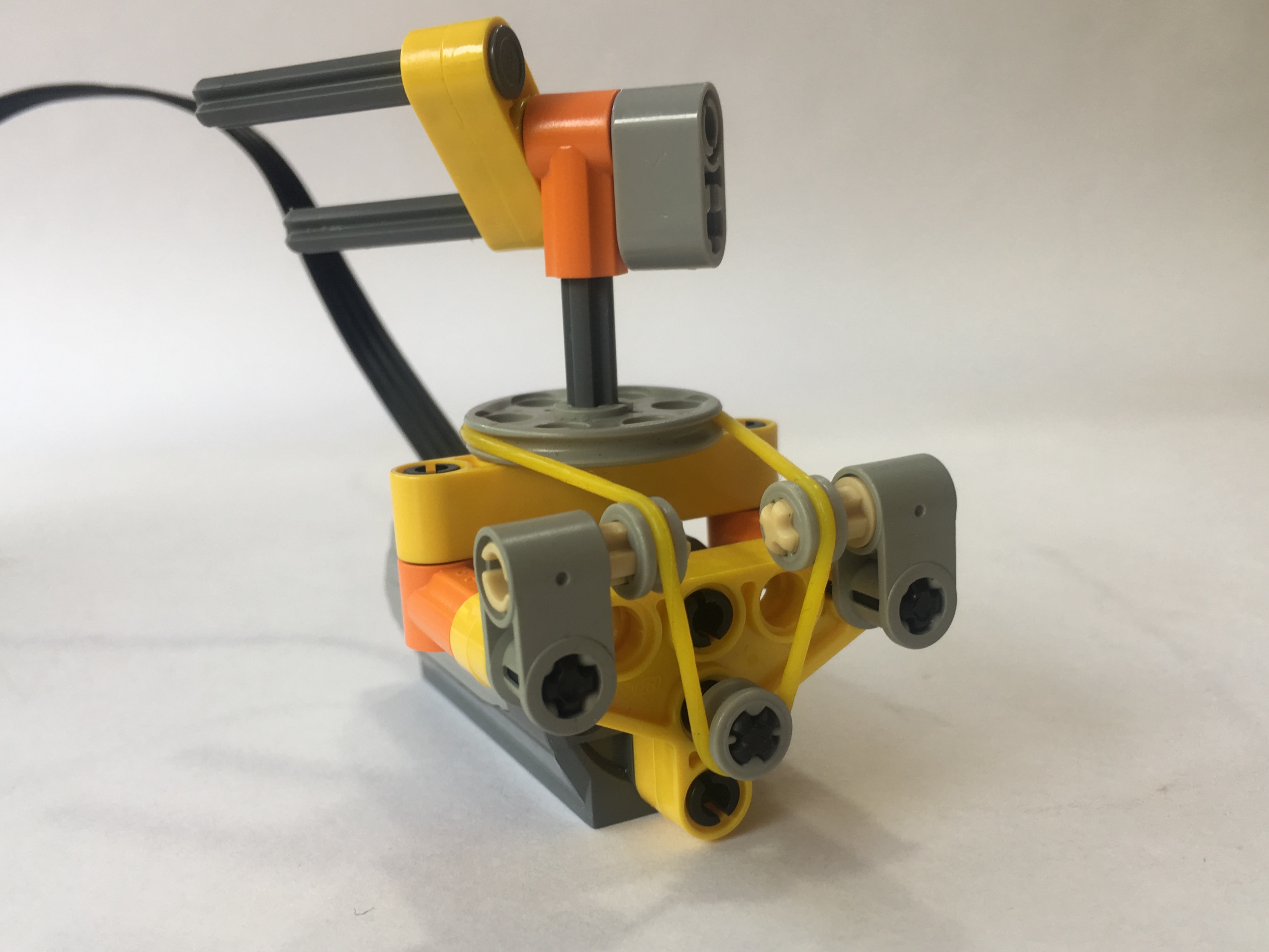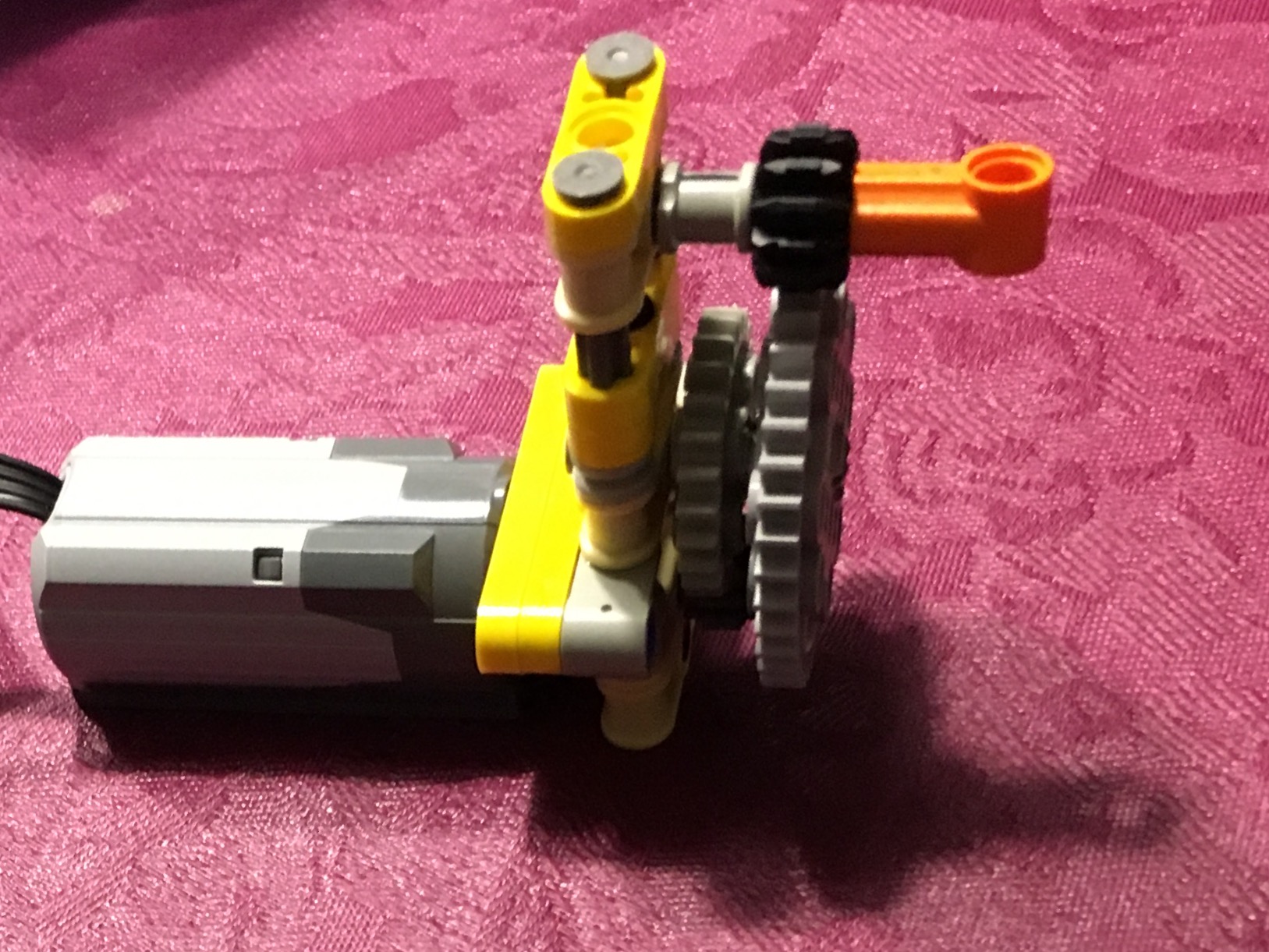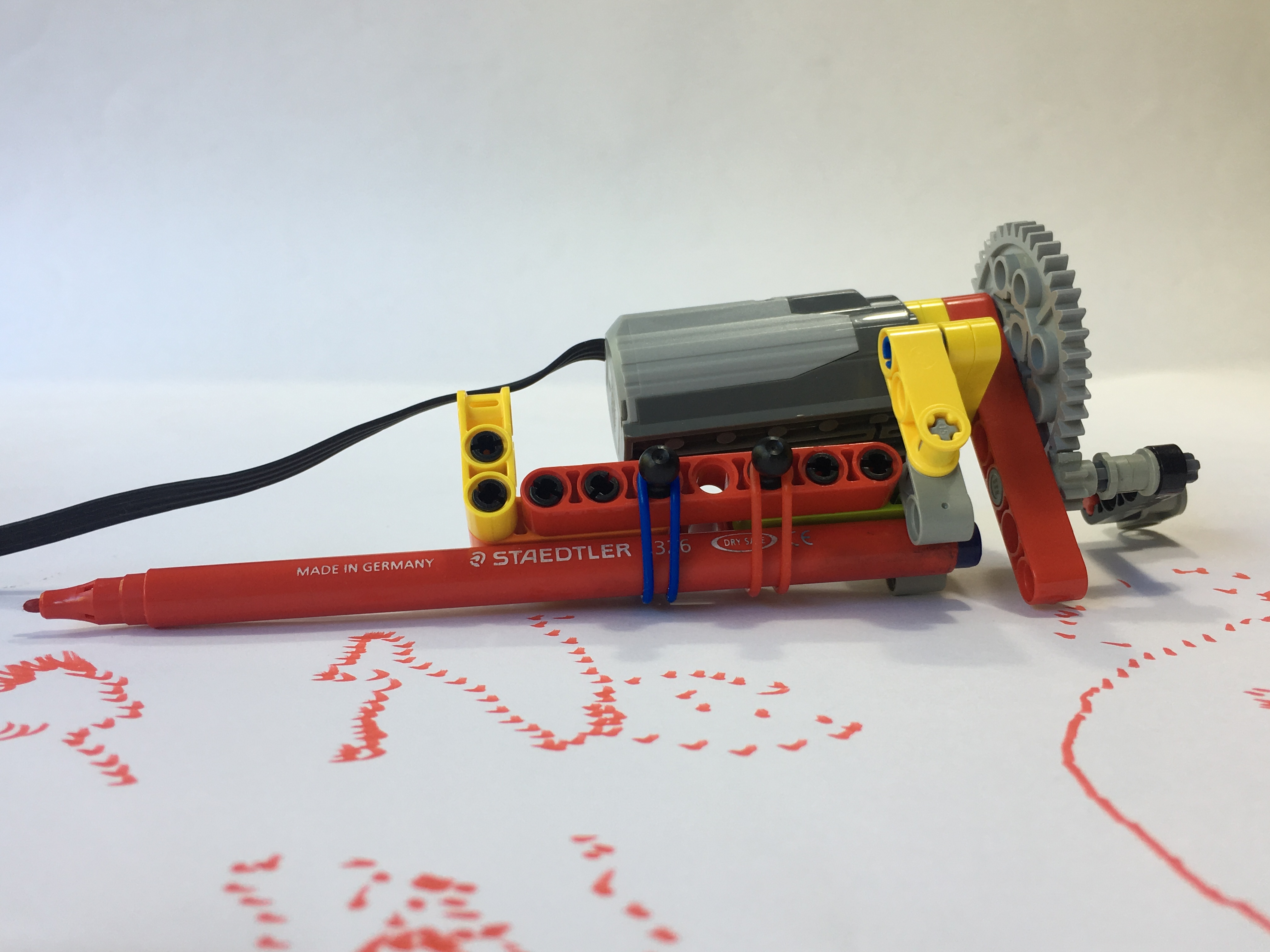Yes, we (Martina, Pau, and me) have participated:
First LEGO League Junior (DEU)
First LEGO League Junior (ENG)
First LEGO League Junior (ESP)
Table of Contents
1. Session, 19th of October, 2016
2. Session, 26th of October, 2016
3. Session, 2nd of November, 2016
4. Session, 9th of November, 2016
5. Session, 16th of November, 2016
6. Session, 23rd of November, 2016
7. Session, 30th of November, 2016
8. Session, 7th of December, 2016
9. Session, 14th of December, 2016
10. Session, 21st of December, 2016
11. Session, 11th of January, 2017
12. Session, 18th of January, 2017
13. Session, 25th of January, 2017
14. Session, 1st of February , 2017
15. Session, 8th of February, 2017
16. Session, 15th of February, 2017
1. Session, 19th of October, 2016
1.1 Objectives
- Team building (15 minutes)
- Team Values
- Team Name
- Team Logo
- Team Colour
- Talk about the bees environment (15 minutes)
- Beehive
- Field
- Animals
- Build easy components (60 minutes)
- Initiation set
- Flowers
- Trees
- Simple mechanics (#5, #6, #28, #69, #72, #89, #2220, #233)
1.2 Resources
- Values
- Somos un equipo.
- ¡Los participantes hacemos el trabajo!
- Nuestros Entrenadores nos ayudan a aprender, pero encontramos las respuestas nosotros mismos.
- Compartimos nuestras experiencias y descubrimientos con los demás.
- Ayúdanos a otros, somos amables y mostramos respeto cuando trabajamos, jugamos y hacemos presentaciones. Lo llamamos Cortesía Professional.
- Todos somos ganadores.
- ¡Nos divertimos!
- LEGO
- Set 45803 (initiation set)
- Set 9385 (pieces)
- The LEGO Power Functions Idea Book, V1
- Videos
1.3 Results
The team will be called SuperRobotics. The team colours are yellow, blue and orange.
We build the inspiration set:
The bee, build by Martina.
The beehive by Pau.
Flowers, one flower with nectar, by `Frank
Flowers, one flower with nectar, by Martina.
Sun flower by Pau.
Simple mechanics, #5, by Martina. Both gears run with the same speed, but opposite direction.
Simple mechanics, #6, by Pau. Both large gears run with the same speed and in the same direction, because there is a small gear in between.
Simple mechanis #233 by Frank. It lifts up and down.
2. Session, 19th of October, 2016
2.1 Objectives
- Talk about the bees environment (20 minutes)
- Discover how and why bees look for nectar and pollen
- Why bees are important
- Build simple components (70 minutes)
- Improve construction of flowers and trees
- Build simple mechanics (#28, #69, #72, #89, #220)
2.2 Resources
- Narration
- Es una cálida mañana de primavera. Elisa la abeja está dispuesta a trabajar. Su trabajo es ayudar a hacer comida, pero primero tiene que encontrar flores. Asoma la cabeza por la abertura de la colmena y se aleja volando. Utiliza sus sentidos de la vista y del olfato para encontrar flores. Poco después, Elisa encuentra unos manzanos llenos de flores. Se posa en una de ellas. Utiliza su larga lengua para succionar el néctar. Pequeños granos del polen de la flor se adhieren al pelo que recubre su cuerpo. Se cepilla algunos de los granos de polen y los deposita en las bolsitas de sus patas. Después, se posa en otra flor. Elisa recolecta tanto néctar y polen como puede transportar y vuelve a la colmena enseguida. De vuelta en la colmena, Elisa entrega el néctar y el polen a otras abejas obreras. Éstas comienzan a transformar el néctar en miel. También lo utilizan para hacer otros alimentos. Comen parte de los alimentos, alimentan a otras abejas de la colmena y guardan un poco para el invierno. Elisa vuelve volando a las flores. Hace muchos más viajes yendo y viniendo de la colmena a las flores y de las flores a la colmena. Está ayudando a las abejas de su colmena, ¡pero también nos está ayudando a nosotros! Cuando las abejas recolectan polen de una flor, lo llevan a otras flores, lo que las ayuda a generar semillas. A veces, crecen frutos alrededor de estas semillas. Sin abejas como Elisa, frutos como las manzanas o las almendras no crecerían. No tendríamos tantas flores ni alimentos. Al final del día, Elisa está cansada. ¡Ha sido un día duro!, pero ha hecho un buen trabajo. Se acomoda un lugar confortable en la colmena y descansa. Sus sueños están llenos de flores y miel muy, muy dulce.
- LEGO
- Set 45803 (initiation set)
- Set 9385 (pieces)
- The LEGO Power Functions Idea Book, V1
- Fotos






- Videos
2.3 Results
#28 by Martina. Slowing down the speed of the motor.
#88 by Martina, changing angel of movement.
Model #220 by Frank, wings like a bird.
 #72 by Pau, turning angel of movement.
#72 by Pau, turning angel of movement.
#88 by Pau, speeding up motor.
3. Session, 2nd of November, 2016
3.1 Objectives
- Talk about the bees environment (15 minutes)
- Define environment
- List animals in the environment of bees
- Animals
- Build easy components (60 minutes)
- Build animal of choice
- Build a imple mechanics (#28, #69, #72, #73, #89, #90, #106, #108, #113, #126, #129, #132, #133, #222)
3.2 Resources
- LEGO
- Set 45803 (initiation set)
- Set 9385 (pieces)
- The LEGO Power Functions Idea Book, V1
- Videos
3.3 Results
Made by Pau.
Made by Martina.
Made by Frank.
4. Session, 9th of November, 2016
4.1 Objectives
- Talk about the bees environment (20 minutes)
- Identify the base components of the bees environment
- Look for information about the chosen animal
- SQA (que Sé, que Quiero saber, que Aprendo)
- Build easy components (70 minutes)
- Build the chosen animal
- Simple mechanics (#28, #69, #72, #89, #222, #233)
4.2 Resources
- LEGO
- Set 45803 (initiation set)
- Set 9385 (pieces)
- The LEGO Power Functions Idea Book, V1
- Videos
4.3 Results
Tadpole.
Build by Pau.
Frog.
Build by Martina.
Frog.
Build by Frank.
System of 4 gears to change motor speed.
Build by Martina.
System of 4 gears to change motor speed.
Build by Pau.
Crazy pencil.
Generating vibrations.
Build by Frank.
5. Session, 16th of November, 2016
5.1 Objectives
- Introduction of Technical Design (30 minutes)
- Define the problem
- Look for a solution
- Improve the solution
- Introducing Programming (30 minutes)
- Introduction of SCRATCH
- Look for easy components (30 minutes)
- Simple mechanics that helps for the model
5.2 Resources
- LEGO
- Applications
5.3 Results
Will come later.
6. Session, 23rd of November, 2016
This is the last learning and preparation session.
6.1 Objectives
- Talk about what we have learned (15 minutes)
- Bees
- Their environment
- Animal of choise
- Build first robot (45 minutes)
- Choose one project of WeDo 2.0 and build it
- Verify whether other project may be interesting for the exposition
- Build it with other resources
6.2 Resources
- LEGO
6.3 Results
Will not be published.
7. Session, 30th of November, 2016
7.1 Objectives
We start today the building phase.
- Planing (15 minutes)
- Remember rules
- Draw pictures, make a blue print
- Discuss them and choose one
- Terminate last session mechanics (15 minutes)
- Choose one project of WeDo 2.0 and build it
- Start with the model (60 minutes)
- Build first version
7.2 Resources
- LEGO
- Set 45803 (initiation set)
- Set 9385 (pieces)
- The LEGO Power Functions Idea Book, V1
- WeDo 2.0 Core Set
7.3 Results
Basic structure ready. Photos will not be published.
8. Session, 7th of December, 2016
8.1 Objectives
- Planing (15 minutes)
- Revise planning
- Continue with the model (60 minutes)
- Build first version
8.2 Resources
- LEGO
- Set 45803 (initiation set)
- Set 9385 (pieces)
- The LEGO Power Functions Idea Book, V1
- WeDo 2.0 Core Set
8.3 Results
Will not be published.
9. Session, 14th of December, 2016
9.1 Objectives
- Planing (15 minutes)
- Revise planning
- Continue with the model (60 minutes)
- Build first version
9.2 Resources
- LEGO
- Set 45803 (initiation set)
- Set 9385 (pieces)
- The LEGO Power Functions Idea Book, V1
- WeDo 2.0 Core Set
9.3 Results
Will not be published.
